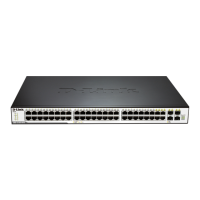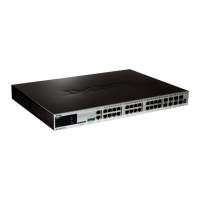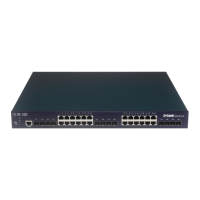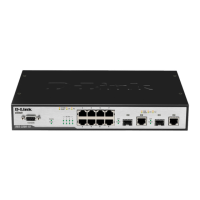xStack® DES-3528/DES-3552 Series Layer 2 Managed Stackable Fast Ethernet Switch Web UI Reference Guide
126
Click the Refresh button to refresh the display table so that new information will appear.
Click the <<Back button to return to the previous page.
Multicast VLAN
In a switching environment, multiple VLANs may exist. Every time when a multicast query passes through the
Switch, the Switch must forward separate different copies of the data to each VLAN on the system, which, in turn,
increases data traffic and may clog up the traffic path. To lighten the traffic load, multicast VLANs may be
incorporated. These multicast VLANs will allow the Switch to forward this multicast traffic as one copy to recipients
of the multicast VLAN, instead of multiple copies.
Regardless of other normal VLANs that are incorporated on the Switch, users may add any ports to the multicast
VLAN where they wish multicast traffic to be sent. Users are to set up a source port, where the multicast traffic is
entering the Switch, and then set the ports where the incoming multicast traffic is to be sent. The source port
cannot be a recipient port and if configured to do so, will cause error messages to be produced by the Switch.
Once properly configured, the stream of multicast data will be relayed to the receiver ports in a much more timely
and reliable fashion.
Restrictions and Provisos:
The Multicast VLAN feature of this Switch does have some restrictions and limitations, such as:
1. Multicast VLANs can be implemented on edge and non-edge switches.
2. Member ports and source ports can be used in multiple ISM VLANs. But member ports and source ports
cannot be the same port in a specific ISM VLAN.
3. The Multicast VLAN is exclusive with normal 802.1q VLANs, which means that VLAN IDs (VIDs) and VLAN
Names of 802.1q VLANs and ISM VLANs cannot be the same. Once a VID or VLAN Name is chosen for
any VLAN, it cannot be used for any other VLAN.
4. The normal display of configured VLANs will not display configured Multicast VLANs.
5. Once an ISM VLAN is enabled, the corresponding IGMP snooping state of this VLAN will also be enabled.
Users cannot disable the IGMP feature for an enabled ISM VLAN.
6. One IP multicast address cannot be added to multiple ISM VLANs, yet multiple Ranges can be added to
one ISM VLAN.
IGMP Multicast Group Profile Settings
Users can add a profile to which multicast address reports are to be received on specified ports on the Switch. This
function will therefore limit the number of reports received and the number of multicast groups configured on the
Switch. The user may set an IP Multicast address or range of IP Multicast addresses to accept reports (Permit) or
deny reports (Deny) coming into the specified switch ports.
To view the following window, click L2 Features > L2 Multicast Control > Multicast VLAN > IGMP Multicast
Group Profile Settings, as shown below:
Figure 4-65 IGMP Multicast Group Profile Settings window
The fields that can be configured are described below:
Parameter Description
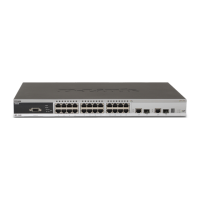
